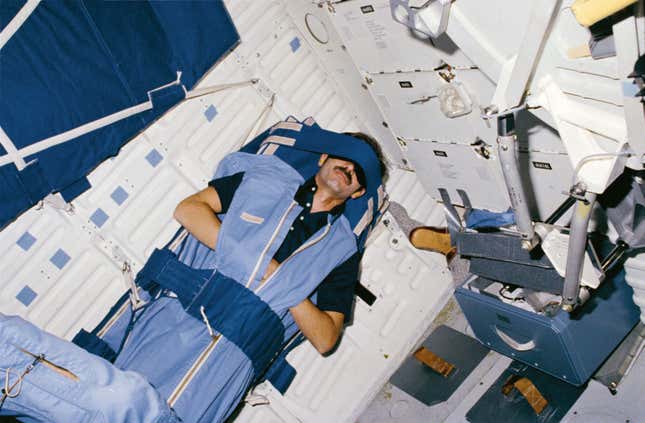
The Artemis 1 mission to the Moon is uncrewed—at least in space. On the ground, more than 200 NASA engineers and technicians in Florida and Texas are required to get the rocket off the ground.
And launching rockets often takes place in the middle of the night, or very early in the morning, when the weather tends to be calmer. The Artemis 1 mission took off at 1:47 am ET, for example, and its first launch attempt in late August was scheduled for 8:33 am ET—which meant the entire team stayed up all night, because fueling the Space Launch System rocket takes about nine hours.
During that first launch attempt, the ground controllers ran into a variety of propellant leaks and a faulty engine temperature sensor. The launch was scrubbed about an hour after its intended lift-off time—largely so that the team could get some rest before figuring out what to do next.
“The team worked through a number of issues today, the team was tired at the end of the day, and we just decided it was the best to knock it off and reconvene tomorrow,” Mike Sarafin, the NASA executive in charge of the mission, said at the time. “We’re going to give the team time to rest, first of all, and come back fresh tomorrow.”
Few people have jobs with stakes as high as a NASA engineer, but the agency’s approach to productivity can help the rest of us. If you (or your boss) are tempted to adopt an Elon Musk-style policy of being “extremely hard-core” and working “long hours at high intensity,” read on.
Fatigue can be a dangerous thing
In 1997, an American astronaut and two Russian cosmonauts were onboard the Mir space station. A re-supply spacecraft was on its way to the station, and one of the cosmonauts used remote controls to manually bring it in. But the spacecraft smashed into Mir, breaking open the station; the occupants managed to seal off a damaged module with just minutes of breathable air left onboard.
After the accident, a number of problems with the technology appeared, but there was a larger one: The cosmonaut who operated the spacecraft had not been getting enough sleep and was known to be quarrelsome and irritable; a Russian space agency psychologist admitted “grave doubts” about the cosmonauts ability to dock the spacecraft, but they still signed off on the attempt.
“It is not uncommon to find out human error was connected with high fatigue levels in the run-up,” Dr. Stephen Hart, a neurologist who has served as a NASA flight surgeon for 25 years, told Quartz.
NASA’s approach to balancing productivity and rest
Hart’s primary job is ensuring the health of the astronaut corps, who follow military-style duty days requiring about 8.5 hours of sleep every day when on the International Space Station. But he and his colleagues also advise NASA leadership on how to plan for the team on the ground to be ready at big decision points—“what’s the best time for us to be sleeping to be fresh for that?”
NASA ground crews are advised on how to shift their sleep schedules with substances that might seem familiar (caffeine and melatonin), different tools (blue blocker glasses, eye masks, and ear plugs), and a variety of techniques (naps and breath work).
A big part of the challenge is that there is so much variation in how people react to a lack of sleep. NASA is big on testing its hardware, but it also wants its personnel to experiment so they know what to expect. NASA has even released an app based on the techniques it uses to evaluate whether astronauts on orbit are too fatigued. It’s designed for researchers to use in assessing “psychomotor vigilance” during sleep studies, but you can use it yourself to see how fatigue is affecting you.
“Some people are rock solid without very much sleep and others are crash and burn,” Hart says. “You have to encourage people to experiment with their own bodies before they put themselves or others in stressful situations.”